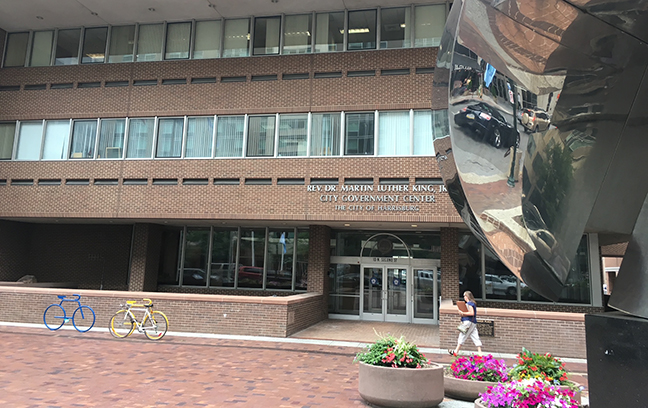A decade ago, Harrisburg, Pa., became a national poster child for financial disaster.
By next week, the city will be, essentially, debt-free.
On Tuesday, City Council passed a resolution authorizing the payment of $8.3 million to its bond insurer, Ambac Assurance, freeing Harrisburg from the stranglehold of debt that led it, back in 2011, to the brink of municipal bankruptcy.
I feel that this occasion should not pass without some recognition of just how remarkable an accomplishment this is.
I won’t bore readers with the ins and outs of how Harrisburg got into this mess, except to say that the city went on a reckless spending spree spanning decades under the longtime administration of former Mayor Steve Reed. By 2010, the city, with some 50,000 residents, had a debt load north of half-a-billion dollars.
The city paid a huge price to dig itself out. That price included state receivership, the sale of the troubled city incinerator (just as it finally got fixed) and, the unkindest cut of all, the long-term lease of the city’s valuable parking assets.
Despite these measures, Harrisburg was left with a massive debt load that many doubted it could ever repay. Now, it has, retiring the final piece of $26.5 million in forbearance liabilities it incurred after defaulting on bond obligations during the financial crisis.
The Papenfuse administration deserves a share of credit for this accomplishment, as, in 2021, it reached a critical deal with Ambac that lessened the burden. Successive city councils and the city controller also watched the bottom line, and the Williams administration, upon taking office in January 2022, made paying off the remaining debt a high priority.
Credit also should go to an entity I often criticize—the commonwealth. Indeed, the state should have looked more carefully and critically as Reed-era spending ran amok in the 1990s and early 2000s. But, in the end, it facilitated a financial recovery plan, played a key role in monetizing city assets, and, later, led by state Rep. Patty Kim and Sen. John DiSanto, extended the city’s extra taxing authority to provide a longer-term financial solution.
So, where to now? Unfortunately, Harrisburg’s hangover from its fiscal crisis isn’t quite over. It still has to exit Act 47 (the state’s program for financially distressed cities), settle litigation over the ill-advised, reckless incinerator financing and regain access to the credit markets, to name a few priorities. And, unless something is done to slap Park Harrisburg (and its out-of-state asset manager) into reality, the skyrocketing cost of parking remains a real threat to the long-term viability of downtown.
Having said that—we should pause for a moment to relish this accomplishment. I vividly recall the long, difficult nights, a dozen years ago, that I spent in city council chambers, wondering if Harrisburg had any future at all. I’m now confident that that future, while challenging, is a bright one.
Lawrance Binda is publisher/editor of TheBurg.
This editorial has been updated.
If you like what we do, please support our work. Become a Friend of TheBurg!





